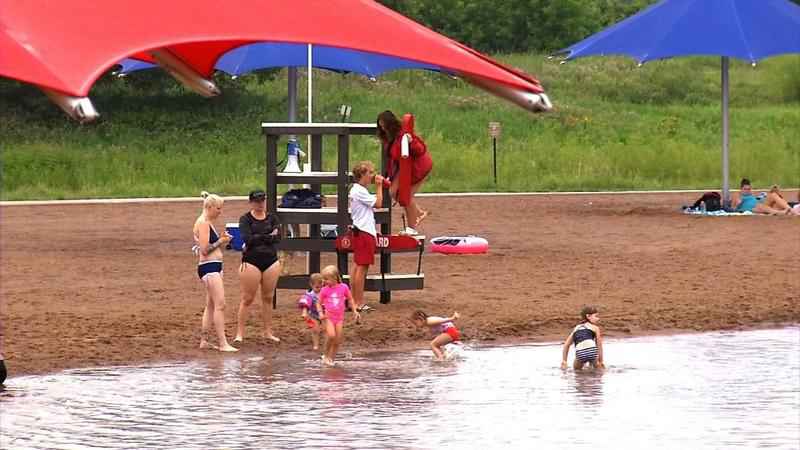How the drought and heat are impacting swimmer’s itch this summer
A little bit of rain certainly didn’t stop lake goers from enjoying Elm Creek Swimming Pond in Maple Grove.
"We came here one time, we really liked it, and we got memberships, and we haven’t had any issues so far," said Angel Solis.
Because the water in the pond is filtered and chlorinated, park staff says there’s no fear of swimmer’s itch, something swimmers appreciate.
"We have luckily never had it, but we know it’s been pretty bad so we try to stay with lakes that are filtered and chlorinated, I just don’t want to have to worry about it, my kids are little," Theresa Lieser said.
But other lakes have been hit hard. Early this summer, Facebook discussions from Detroit Lakes to Duluth, and Lake Mille Lacs to White Bear Lake shared warnings about swimmer’s itch — also called cercarial dermatitis — and information about treatments.

[KSTP]
"It’s common in a lot of lakes, and when people swim, they tend to stay near shore and it tends to be more abundant near shorelines," said Bob Ekstrom, a regional aquatic habitat specialist with the Minnesota Department of Natural Resources (DNR) in Bemidji.
The DNR says swimmer’s itch is a temporary skin rash that is caused by parasites carried by waterfowl and snails. The parasites can burrow into skin while people are in the water, causing an allergic reaction that appears as itchy red bumps.
"I wouldn’t be surprised if more people are experiencing swimmer’s itch right now because the days have been warm and people have been swimming more," Ekstrom said.
There are creams and lotions to put on your body before you go into the water that say they will prevent swimmer’s itch, some say sunscreen also works, toweling off and taking a shower after you get out of the water is also recommended.
"We do sunscreen and showers as soon as we get home, when we get home, everyone is jumping in the showers," Solis shared.
The DNR says keeping ducks and geese away from your shoreline and swimming father away from shore are key, as the parasites like shallow, warm water.
"We’re in a drought, so the water is low, the lower water is warmer and the snails might be more abundant because of these conditions," Ekstrom added.
And it appears the warmth will only continue, with a streak of 90 degree days in the forecast over the next week.